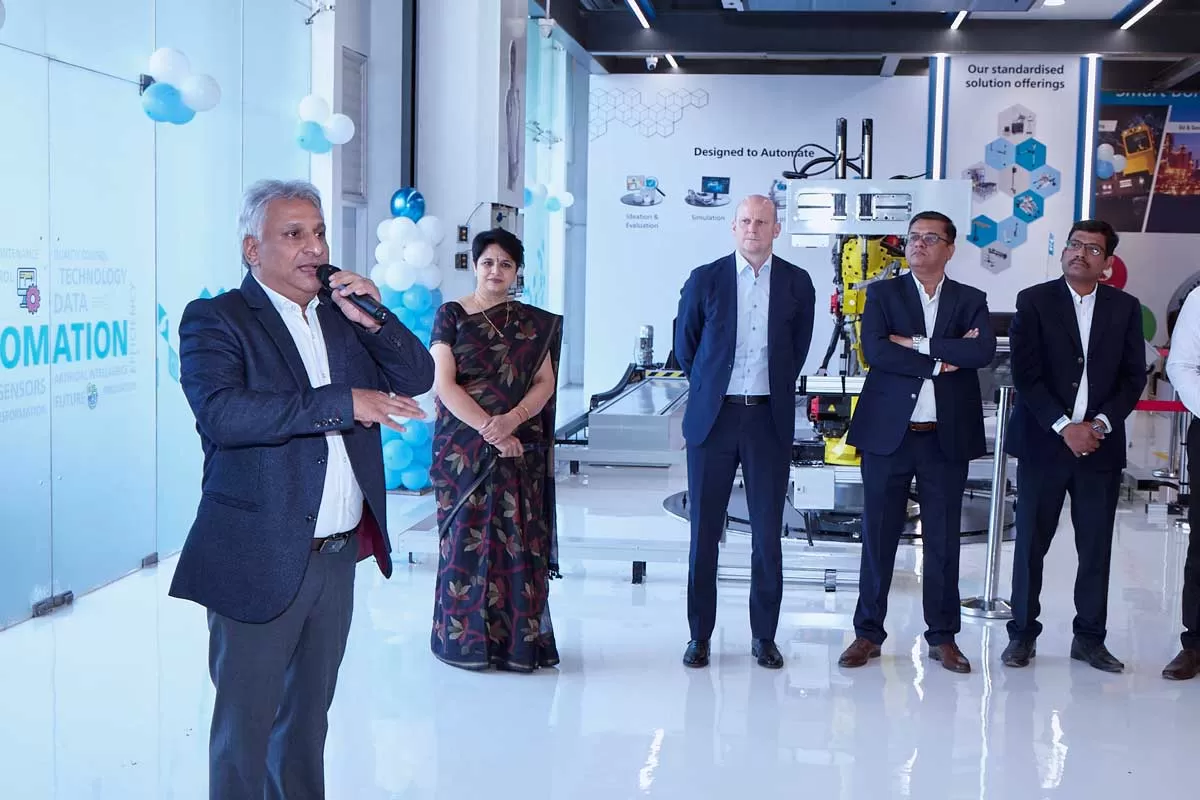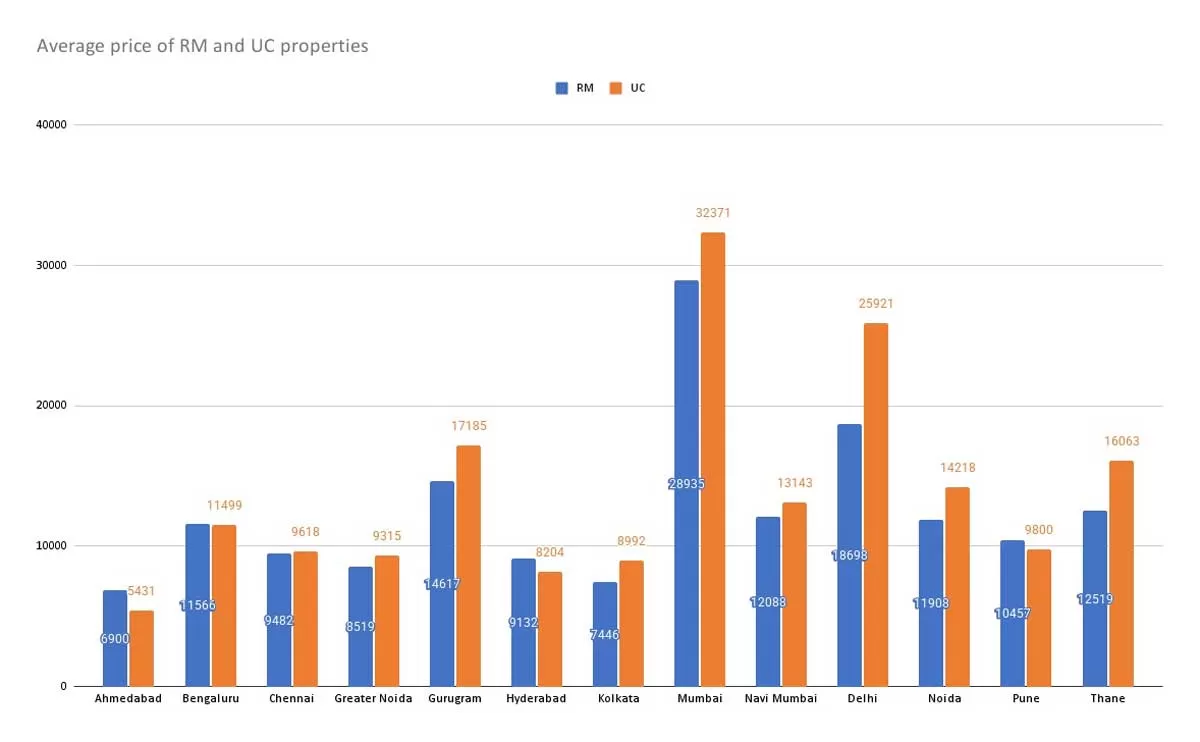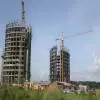The josh is high on FDI with India having become an attractive destination for long-term international funds over the past decade.
“While most countries are in turmoil due to inflation and internal conflicts, India has brought about a great amount of stability,” says Niranjan Hiranandani, Co-Founder and Managing Director, Hiranandani Group, “The Centre is investing heavily in state infrastructure; almost 40 to 50 km of national highway per day is being achieved. In Mumbai alone, projects include a cross-harbour bridge, coastal road, Navi Mumbai Airport and Ro-Ro connectivity, and others, all this put together is about `3 trillion. National highways have attracted a lot of funding. Blackstone, Brookfield and CPPIB have been investing in commercial real estate. And a huge amount of funds have come into data centres through the FDI route.”
“We are seeing FDI inflows in both real estate and infrastructure,” says Kaushik Desai, Managing Partner, Walton Street Blacksoil (WSB) Fund. “With the Government’s focus on infrastructure, a lot of new funds are investing or keenly evaluating transactions in India.” He shares that gross FDI inflows continue to rise year-on-year (YoY) – at about 84 billion in FY22. Even if we look at the last five-year period from 2017-22, real-estate FDI inflow jumped three times from the previous five-year block. “From that perspective, the FDI inflow appears to be strong and we expect that to continue.”
“Affordable mid-income and high-end residential real estate have picked up in the past two years. Inventory levels are down, new projects are getting launched, there is a lot of customer interest, and data of mortgage loans has been growing at 16-17 per cent,” says Sunil Rohokale, CEO & Managing Director, ASK Investment Managers. He adds that HDFC has disbursed `2 trillion in one year, ICICI bank, SBI Axis and Kotak Mahindra Bank, which always shied away from mortgage lending, are now focused on the housing finance business. Indicating the recovery of the sector and attractive ness to the foreign investors too. “Residential, which is a cashflow-based asset class, has started seeing positivity and HDFC Capital was able to raise a new fund with this focus, which is largely driven by FDI – to about $1.3 billion-plus, while we raised the first `620 crore – all focused on the residential high-yield credit fund.” As for commercial real estate, he adds that the past five years have seen the entrance of REITs as the most exciting asset class, even for foreign investors.
“Long-term investors like pension funds and sovereign funds have increased their allocation for investment in the country,” says Vijay Agrawal, Executive Director, Equirus Capital. This is owing to favourable policies such as tax exemption to pension and sovereign funds, a stable policy environment and suitable policy changes. “The Government is proactive in understanding issues faced by long-term investors and making necessary changes.”
He points out how NHAI InvIT has recently allowed nominees from investors in its Investment Management Committee board. This is being implemented by NITI Aayog for other departmental InvITs. The Government has also announced its divestment pipeline in advance to help investors assess various sectors, make plans and create teams for investment and management.
In the real-estate sector, Indian developers have built world-class IT parks in partnership with global investors. These have been transferred to REIT to attract a new class of long-term investors. As Agrawal says, “Global investors have created a platform with a few developers with an understanding to create a large pool of IT parks. This strategy is being played in warehouses and industrial parks. Investors are also investing in residential projects with developers and taking exit post completion.” And RERA has instilled further confidence.
While investors are bullish about infrastructure in India, these investments only flow towards certain infrastructure sectors. Ankit Jain, Head-M&A and Business Development, Cube Highways and Transportation Assets Advisors Pvt Ltd, says, “This is because investors want to ensure a stabilised performance. As an investor, one of the biggest factor is coordination with the relevant Government Department. In roads, for instance, the Government has set up the National Highways Authority of India (NHAI), which makes it easy for coordination with a more professional structure. There is an inclination towards investing in specific sectors, and not every infrastructure asset.” Cube Highways and Transportation Assets Advisors Pvt Ltd (CHATAAPL) acts as the management advisor to Cube Highways and Infrastructure Pte Ltd and its affiliates (hereinafter referred to as “Cube Highways”)
Why FDI for real?
So, how does the Indian real-estate developer benefit from FDI?
Developers in India are looking at long-term capital for 5-10 years, which can come in only through FDI, believes Rohokale. Plus, FDI capital does not have strings attached like banking capital and is in the form of performing credit, high yield credit, structured equity or pure equity. Unlike loans, it is not debt capital. “This is an opportunity limited to developers with a good track record of execution, whose projects are financially viable, and whose governance, disclosure and risk management are in place. It is largely focussed on large cities – Mumbai, Pune, Bengaluru, Chennai, Delhi, NCR and Kolkata.”
Hiranandani Group sold its Powai portfolio to Brookfield for $3 billion. “There are opportunities where investments by foreign funds would become useful,” says Hiranandani. “We hold a lot of other portfolios that we have not sold to anybody. But when we saw an opportune time with great pricing, we sold that investment to Brookfield.”
The three major sectors in real estate that have received FDI inflows in India are the office, industrial and warehouse and residential sectors. “The industrial and warehousing sector has seen strong FDI inflows after the GST rollout,” observes Desai. “With strong FDI interest and demand in the Grade-A office segment, there is a shift in the developer mindset – with a focus on developing and maintaining Grade-A buildings that could be a part of REIT portfolios. In the past 10 years, we have seen many sovereign funds, pension funds and other institutions invest in the Grade-A office space.”
According to Agrawal, developers need FDI to buy land, complete construction and hold on to assets like IT parks post completion. These are various domains where different types of investors are investing with different yield expectation. “India has attracted all types of investors, including prominent global names like Brookfield, CPPIB, CDPQ, Blackstone and Apollo. FDI has helped Indian developers implement larger projects and upgrade their technical strengths. New developers have been created by FDI investors such as Prestige, Embassy, Phoenix, Godrej, Shapoorji and Rustomjee.”
If one is to look at the dimensions, which relate to the aspect of investments, the closest indicator is private equity (PE), says Vivek Rathi, Director-Research, Knight Frank India. Here, most of the money is raised from overseas investors. “Combined with domestic as well as the foreign fundraisers, the investment activity in the overall real estate sector was strong for the last four or five years. However, the year 2020 witnessed a dip but asset owners were not really willing to reduce the valuations in a hurry. And the year 2021 once again saw a sharp rise in investment activity. Almost $6.1 billion was recorded in all four segments: office, residential, retail, and warehousing.” In terms of underlying trends, across these asset classes, office continues to attract most amount of PE, followed by warehousing, residential and retail.
Rathi also emphasises on data centres being present in the country for the last 10 years. “It’s only in the last two or three years that it has become important from the Asia Pacific perspective to create local data centres. And in 2021, we recorded about $2.2 billion investments in data centres, and this is only expected to go up. The regulatory intervention to create the infrastructure locally is what is driving development and investment of data centres in India, which is expected to scale up from here.”
Success of an investor-friendly policy
To promote FDI, the Government has put in place an investor-friendly policy, with most sectors, except certain strategically important ones, open for 100 per cent FDI under the automatic route.
“The real-estate sector directly contributes 7-8 per cent to the GDP, and 13-14 per cent if you consider indirect contributions as well,” Desai points out. “It is a large sector that attracts FDI and it is important to have adequate capital coming in from offshore in this sector. Investors expect a stable regulatory regime and certain tax policies.”
For his part, Jain emphasises upon how some recent projects do not have an investor friendly framework and that the Government is not willing to give adequate relaxations to these. “Typically, the Government prices infrastructure projects considering equity returns for a private player ~12-13 per cent. Such pricing can be considered for sectors with established contractual framework. However, for newer sectors, investors expect higher returns as there are unknown risks. Further, all risks are passed on to the private player, including regulatory and taxation risks. The contractual framework for such projects shall be made to mitigate the potential risks for private investors.”
“FDI investors are preferring IT parks, malls and warehouses,” says Agrawal. “In urban infra, few investments have happened due to lack of a favourable investment climate and counterparty risk with municipalities. The Indian roads sector has attracted the highest investment in the infra sector owing to a stable policy environment and NHAI’s proactive support.” However, urban transport projects have not attracted FDI as they have a long gestation with low returns.
In Hiranandani’s view, the proof of the pudding is in the eating. “We have already received investments and these are continuing to flow in. So, the policy is certainly successful. But it can always be made more friendly.
At present, we are still not competitive to draw FDI in all sectors. The focus needs to be on improving ease of doing business, especially in sectors where we have not yet been as successful. India should not be one of the destinations for FDI; it should be the destination for FDI.”
REITS and InvITs: A preferred choice
REITs and InvITs have now become a preferred vehicle for FDI for completed projects.
Agrawal credits this to ‘regulations’. “It is evident from the fact that there are three listed REITs and three listed InvITs in the country,” he says. “Their pricing has improved and they are able to attract more capital from domestic and international investors.” There are over eight private InVITs holding assets like telecom towers, roads and pipelines. The tax exemptions and 100 per cent FDI in these instruments have attracted investors.
REITS and InvITs both offer good compliance and tax benefits, and are in established sectors, says Jain. In REITs, since there are multiple properties, one also gets a diversification of risk. “Similarly, for instance, there are at least four to five roads in an InvIT. So typically, one gets the benefit of diversification of risk on a specific asset class.”
The REIT is an important milestone in the development of the real-estate cycle, especially for office assets. “From the developer’s perspective, there is a motivation to build A-grade office spaces and maintain them for a longer period of time,” says Desai. REITs have already provided an exit mechanism for developers and funds who previously had to rely on strategic sales. “From an investor’s perspective, the markets are maturing and participating in REITS would be a safe bet with a stabilised return over a period of time. We currently have three to four REITS for office spaces and over the next five to seven years, you will see many other asset classes – like warehousing and data centres – also listed as REITs.”
“Buildings constructed for leasing (for IT, offices) have seen high market demand because of their stable rental values and escalations of 15 per cent in three years’ time, and many of the ultra-rich are willing to subscribe if these are bundled into a REIT,” adds Rohokale. “We have seen most of these REITs have not only done their IPOs but also done a follow-up on the QIP (qualified institutional investors portion). This particular segment is attracting the long-term capital and for those who like to invest in fixed income plus returns.”
With regards to roads infrastructure, investors generally refrain from assuming construction risks – they invest when the project is complete. “Typically, investors do not want to take construction risk because it involves several hurdles, obstacles and approvals,” explains Jain. “For instance, factors that can lead to delay in road construction are land acquisition, shifting of utilities, restriction on movement of materials, increase in the prices of inputs and labour-related concerns. In the case of BOT toll project, the concession period is fixed. If construction gets delayed and faces a time overrun of two years, it results in a loss of revenue for two years.”
Single-window system
India has launched the National Single-Window System, which will become a one-stop shop for approvals and clearances needed by investors, entrepreneurs and businesses.
This will help expedite clearances and implementation. “The Government has set up a team to monitor progress of projects with investment of over `100 crore,” says Agrawal. This mechanism will inspire confidence to invest in projects under construction.
From a real-estate perspective, Desai shares there are still many laws (state, city, central) and a host of other approvals are required for developers and uncertainties with regard to timing for obtaining them. “Any steps towards stabilising and hastening this process would help bring in more FDI. With RERA, a lot of transparency has been brought into the residential sector. The governments have made many changes in this regard, which is why India’s ranking has improved in ease of doing business. But there is still a lot of scope for improvement and any step towards simplifying the approval process would be welcomed by the industry and capital providers.”
There shall be cut down in the time taken to give investment approvals. Consider that, today, if one needs a change in ownership approval from NHAI for a project, it can take up to three to four months because as a process, the application submitted goes to an Independent Engineer, Project Director, and Regional Officer before going to the NHAI head office, where it will go to various departments! Single-window clearance should change such processes, believes Jain. “It will also give us certainty because in road projects, conditions can change rapidly. In case there is a significant change in project dynamics/ economic scenario during the time period required for approval, the entire deal scenario changes. Hence, a single-window clearance is the need; apart from decreasing all the hassles of an approval, it will also increase the certainty of the deal.”
The $100 billion milestone
India is expected to attract $100 billion FDI on the back of economic reforms and increasing ease of doing business.
The question remains: by when?
“While existing asset classes will get stronger, newer asset classes like warehousing and data centres will grow big in coming years if focussed on by both developers and the Government,” predicts Shobhit Agarwal, Managing Director & CEO, ANAROCK Capital. These asset classes along with higher focus on infrastructure and technologies will attract FDI to India in the longer run.
“Land is a state subject and so are several policies relating to labour,” points out Hiranandani. “States can play a huge role in attracting FDI and, ultimately, this will result in better GDP growth of the state and improved employment potential.”
Fiscal and monetary policies do impact FDI, but the biggest need is that states need to welcome FDI, echoes Rohokale. “Telangana and Maharashtra, Gujarat, Tamil Nadu are pitching to various global large manufacturers or investors. They offer resources such as land, water, and power. The state has a vital role to attract capital by incentivising them, welcoming them, and getting equipped.”
In Agrawal’s estimate, India will touch $100 billion FDI by 2024. “The Central Government has played its role in smoothening policy glitches. State governments also need to support by giving state-level clearances, supporting investors in land acquisition and creating industrial parks with ready infrastructure and incentives. Smaller countries like Vietnam, Thailand, and Malaysia are attracting good FDI; one of the reasons for this is the delay in our country. If we identify the issues faced by investors and support them, we can attract over $100 billion FDI per annum.”
That’s, indeed, music to the ears.
Disclaimer: Views expressed by Ankit Jain are in his individual capacity and don’t represent the perspective of the organisation he works for.
Challenge Zone
Shobhit Agarwal, Managing Director & CEO, ANAROCK Capital, shares insights on the challenges with regards to arbitration, execution and implementation in India:
“These can be complex, and often beyond the ken of uninformed investors who are not familiar with India’s various laws. In order to adhere to the country’s regulations and norms, investors must necessarily use local agencies. Finding reliable, experienced consultants can be an arduous task for new investors.
India received the highest annual FDI inflow of $83.57 bn in FY21-22, up 1.95 per cent from the previous year. Even while the past two years have been plagued by the pandemic and the recent geopolitical crisis has disturbed the economic growth, the FDI inflow growth appears to be good. In fact, FDI inflows have increased 20-fold in the last 20 years. While as a nation, we can attract significantly higher FDI inflows, the arbitration proceedings taken by foreign investors and other regional issues have invited global attention.
REITs and InvITs have been well-established in India now and the foreign investors prefer them as it provides a definite exit route to their investments. Also, REITs in specific have been able to attract a lot of retail participation, which is great for the overall growth of the real estate sector.
Karnataka emerged as the top recipient state with a 38 per cent share of the total FDI Equity inflow in FY2021-22 followed by Maharashtra (26 per cent) and Delhi (14 per cent). This concentration remains a major concern as 78 per cent of the inflows are in three states. The government needs to take steps to break this trend and ramp up other states to attract FDI.
The federal structure in India also leads to states drawing up their own FDI policies. For example, Karnataka has attracted FDI due to the investment subsidies, fiscal incentives, and exemptions for export-oriented units. This has led to large-scale FDI inflows in the IT-ITeS, biotechnology, and other sectors. To achieve the ambition of reaching the milestone of $100 billion FDI in a year, India also needs to focus on broader economic policies including corporate taxes, trade openness, and other business climate issues.”
PPP in the Indian Scenario
PPP has to be viewed as public-private partnership, and not as passing on risks to private player, says Ankit Jain, Head-M&A and Business Development, Cube Highways and Transportation Assets Advisors Pvt Ltd. “Our taxation laws are complicated and, most of the time, the contractual framework passes on the entire risk to the private investor.” He believes that in a PPP project, at least the regulatory risk should be borne by the authorities. “The primary focus of PPP project shall be to deliver and maintain quality infrastructure.”
Policy Changes in FDI
Before the 2005 norms, foreign investors had to invest in township and settlement development through a JV with an Indian company, a wholly-owned subsidiary, or a local partner.
The current FDI policy allows 100 per cent FDI under the automatic route in ‘Construction Development: Townships, Housing, Built-up Infrastructure’ but prohibits FDI in ‘Real Estate Business or Construction of Farm Houses’ as well as in ‘TDRs’.
The phrase ‘Real Estate Business’ deals in land and other immovable property with the intention of making a profit. It does not include the development of townships, the building of homes or businesses, the building of roads or bridges, or the operation of Real Estate Investment Trusts (REITs) that are registered and subject to regulation under the SEBI (REITs) Regulations, 2014. Earning rent or income on the lease of a property, not amounting to transfer, also does not constitute as ‘Real Estate Business’. Completion of a project will be determined in accordance with the applicable governing guidelines.
It has been made clear that for the purposes of FDI policy, each stage of the construction development project would be treated as a separate project.
The investor will be permitted to exit on project completion or after the development of trunk infrastructure, i.e., roads, water supply, street lighting, drainage and, sewerage.
A foreign investor can exit and repatriate foreign investment before the completion of a project under the automatic route, provided that a lock-in period of three years, calculated with reference to each tranche of foreign investment, has been completed. The transfer of stake from one non-resident to another non-resident, without repatriation of investment, will neither be subject to any lock-in period nor to any government approval.
The project shall conform to the norms and standards, including land use requirements and provisions of community amenities and common facilities, as laid down in the applicable building control regulations, bye-laws, rules, and other regulations of the governing authorities concerned.
The Indian investee company will be permitted to sell only developed plots, which are plots where trunk infrastructure has been made available.
The Indian investee company shall be responsible for obtaining all necessary approvals, including those of the building and layout plans, developing internal, peripheral areas, other infrastructure facilities, payment of development, external development and other charges, and complying with all other requirements as prescribed under applicable guidelines of any governing authorities concerned.
FDI is not permitted in an entity that is engaged or proposes to engage in Real Estate Business, construction of farmhouses and TDRs.
The DPIIT has, time and again, clarified that Companies incorporated in India (whether owned and controlled by resident Indians or not), having FDI up to 100 per cent can purchase land, including agricultural land, for the purpose of its business activities pertaining to real estate construction and development.
However, the following restrictions have been imposed upon any and all FDI-compliant companies pertaining to the sale of such land that has been acquired by it: Company with FDI is permitted to sell only ‘developed plots’; and company with FDI is restricted from engaging in ‘real estate business’.
Source: Industry sources


















